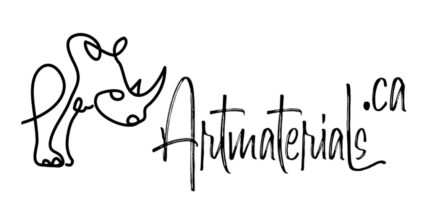- You have no items in your shopping cart
- Continue Shopping

There is no straight answer to what’s better – tubes or pans. Here, I’ll try to explain how things work from the artist’s and chemistry perspectives.
From artist’s side, we’re talking about techniques and other materials used. For washes and work on cold press tubes work better as they provide even coverage and perfect blending. It’s easier to mix desired colours, create a paint solution in water and work in wet techniques when watercolours are soft and creamy. However, there are some issues that watercolorists may struggle with.
First of all, that’s adding values. Obviously, watercolour is a transparent medium, meaning that light is coming from the paper itself. If for oil or acrylic we can create values and shades by mixing colours; sometimes, even colour matching, in watercolours, the value is mostly controlled by the amount of water used. If paints already have a solution form, adding values may be challenging. Even with multilayering techniques, every next application, if it’s watery, can wash out the previous coating, meaning no value is added, just colours got changed.
Adding values is much more controllable with watercolours in pans. So, watercolours in tubes are perfect for laying out, washing, and underpainting, for sure.
Watercolours in tubes are also very handy for illustrators working in paint and ink techniques. The colours and transitions look amazingly alive and the ink just adds a finished and styled look to the illustrations. Also, ink can add some value to shadowed areas and bring a complete appearance.
For a deeper 3D look, watercolours in pans make more sense. You can control values, colours and amount of water used. However, wet-on-wet may be quite challenging here.
Also, there is a practice to transfer tubes into pans and “save” on watercolours in pans and watercolours in tubes may be cheaper per ml. However, this practice doesn’t bring watercolours into a pan stage. Let me explain why.
Pigments have different masses, particle sizes, and densities, meaning they may be heavier or lighter than a binder, absorb more or less of it and provide granulation or not. For example, mineral pigments (such as ochres, siennas, oxide chromium, cobalt, and cadmium) are quite heavy and being suspended in liquid will eventually settle down and separate from the binder. To prevent it, manufacturers use different agents as well as super-pigments that can be dissolved in water and keep the colour. (In ENL watercolours I’m using super-pigments too to enhance the colours).
Another goal of watercolours in tubes is to keep them soft and liquid, so they can be easily squeezed out. That means more glycerin as well as other agents can be added more extensively to the colours that tend to solidify fast. Also, to improve the first impression experience a lot of watercolours in tubes contain unnecessary fillers. So, you grab the colour and it looks intense, and you’re happy. But when trying to spread it with water, it loses the chroma very fast, making creating transparent layers impossible.
Preserving watercolours in tubes by transferring them into pans doesn’t solve any of those issues.
Watercolours in pans require more work and time from manufacturers. During the drying process, water evaporates and paints get solid. It may take 3, 5, or even 10 or more cycles before water the pan is ready to go. Each time, manufacturers have to add paint to pans to make sure it’s full. So, by texture watercolours in pans and in tubes are not the same.
Another aspect to consider is the pigments used. As we discussed before, pigments can be natural, synthetic, organic, inorganic, or mineral. Particles of synthetic organic pigment, such as phthalo-, azo -, naphthol- etc., are finer in size and require more binder to create a homogenous mixture. This also means that keeping these colours transparent with minimum fillers added for pan production is a challenge: paints either don’t solidify well, or more fillers are required. It makes more sense to have this colours in tubes, rather than pans.




